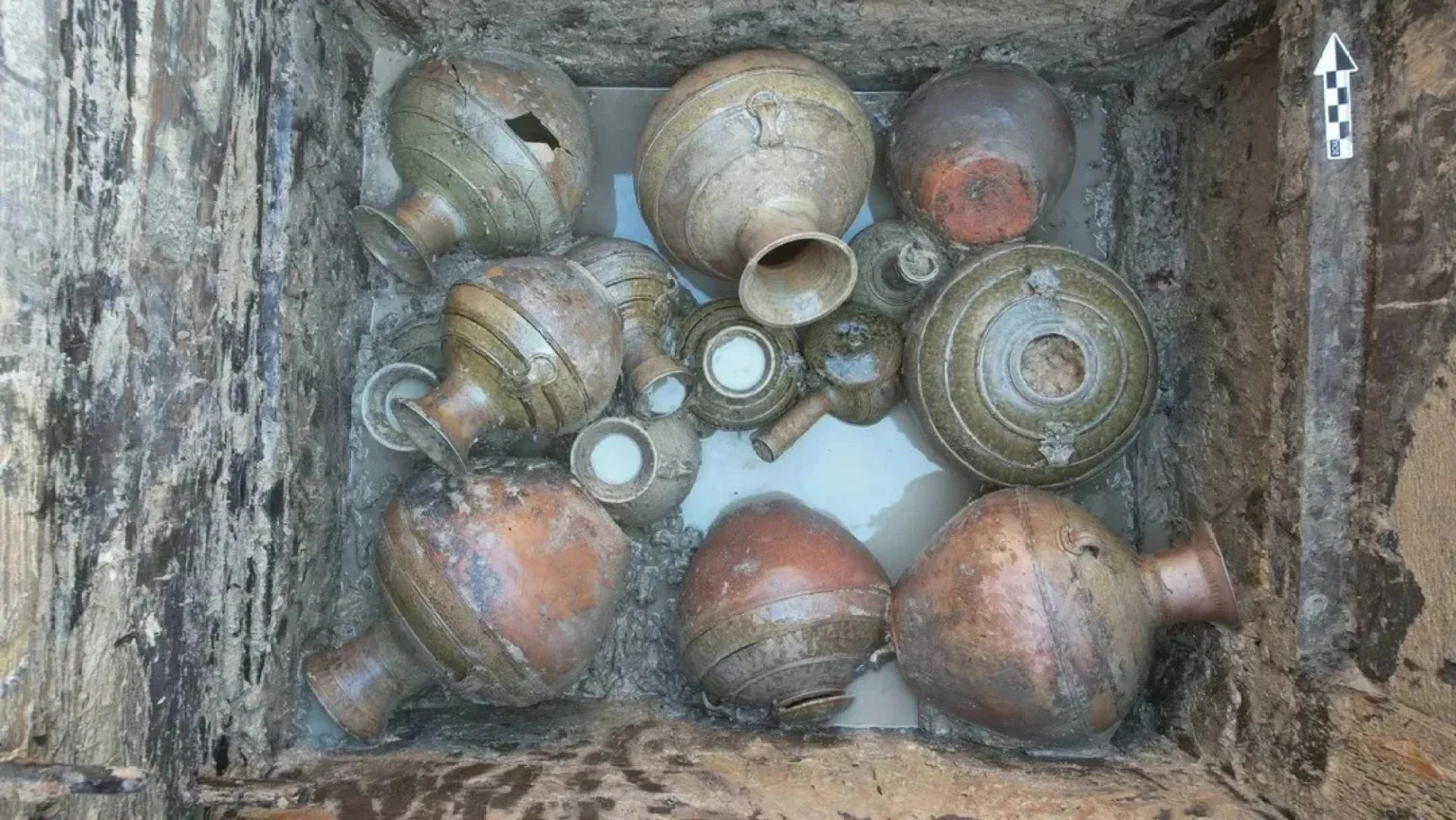Around 1,800 years ago, a family in eastern China constructed three elaborate tombs intended as the final resting places for their loved ones. Over the centuries, two of these tombs were looted, their contents scraped clean by thieves. However, one tomb remained untouched and the other two were forgotten, lying undisturbed until workers expanding a local park in Shandong province stumbled upon a partially damaged mound in late 2023, prompting an excavation.
The Institute of Archaeology under the Chinese Academy of Social Sciences announced, “Although two of the three tombs excavated in Dazhuangzi Cemetery were robbed, the structure of the tombs was relatively clear, and a large number of precious cultural relics were still unearthed.” Notably, the tombs bore the surname Huan, indicating they likely belonged to the Huan family. Dating back to the Western Han dynasty (202BC-9AD), the untouched tomb was particularly noteworthy for its clear structure, which included residential features.
The well-preserved tomb contained a door, passage, and coffin chamber, though the bones inside had decayed over millennia. “The discovery of the exquisitely crafted coffin structure, especially the coffin-carrying carriage, provides valuable material for studying Han dynasty burial customs along the southeastern coast of Shandong,” the announcement stated. Among the funerary objects were beautiful pottery, an iron sword, a bronze mirror, wooden artifacts, and lacquered “ear cups” likely used for drinking alcohol. A standout discovery was a bronze Huan family seal shaped like a turtle.
The excavation took place between December 2023 and January 2024 in Rizhao, a coastal city renowned for its push towards a renewable lifestyle. The city has mandated solar-powered water heating in new buildings and was recognized by the United Nations in 2009 as one of the most habitable cities in the world.
Archaeologists believe the tombs date back to the Western Han dynasty, the older period of Han rule. The Han dynasty (202BC-9AD, 25-220AD) was briefly interrupted by the Xin dynasty (9-23AD) under Wang Mang, a powerful official who executed a palace coup. After rebels overthrew Wang, the Han dynasty resumed its rule, with historians distinguishing between the Western Han (older) and Eastern Han (younger) periods post-Xin.
The Han dynasty is celebrated as one of the golden eras of Chinese history, marked by economic success and significant advancements in science and technology, such as papermaking, the introduction of negative numbers in mathematics, and early earthquake detection technologies. The dynasty’s end came with the coup of warlord Cao Pi, triggering the turbulent Three Kingdoms Period (222-280AD).
These newly discovered tombs offer a fascinating glimpse into the burial customs and daily life of the Han dynasty, enriching our understanding of this pivotal period in Chinese history.
READ MORE:
